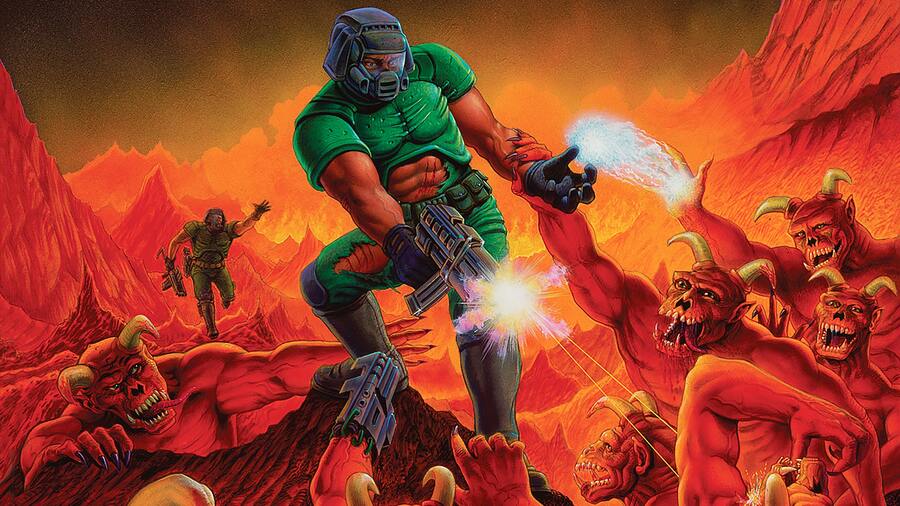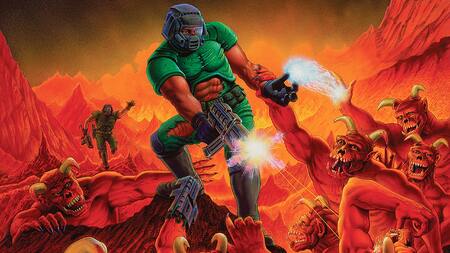
Back in 1995, Randy Linden and his team helped achieve the impossible by bringing Doom to the SNES.
Despite making cutbacks and alterations, this Super FX-powered port still managed to impress; it came at a time when a PC running id Software’s seminal FPS would have cost far more than a copy of the game along with the SNES itself.
While the conversion remains a landmark achievement in 16-bit gaming, it’s clear that Linden feels he has unfinished business here, as it was announced earlier this year that he was working with Limited Run Games to update the SNES version of Doom in a new physical release.
The headline news is that it will be rebuilt from the ground up and will include content that was missing from the original. It will also include a stack of new features – including full-motion video and rumble support – the latter being made possible thanks to a new controller being designed by Innex.
Linden was kind enough to sit down with us a speak about this upcoming enhancement.
Time Extension: Could you talk us through the process that led to the creation of this new and improved version of SNES Doom?
Randy Linden: About two years ago, I did an interview with Digital Foundry, where we discussed my projects and history. One of the interviewers was Audi Sorlie, who works at Limited Run Games. A few weeks after the interview, Audi contacted me and asked if I would be interested in doing an updated version of DOOM for SNES. I told him I’d definitely like to do that and would start work on it right away!
A few months later, I was talking to a friend who knew what I was working on, and he asked, “If you’re adding in the missing levels from the first game, why not also add the entire missing episode 4?”
At that point I had already told id Software that I was using version 1.666 of DOOM which didn’t have the fourth episode, so in our next meeting with id, I asked if I could use version 1.9 (which had the fourth episode) and they agreed!

Could you tell us a little about the history of this new Super FX-compatible chipset? How did you come to create it, and how much work has gone into its design?
The original DOOM for SNES used the maximum available space on a Super FX cartridge which was 2 Megabytes or 16 Megabits. Adding the missing and additional levels to DOOM would require a larger memory space, so I did some estimates and came up with 3 Megabytes as the new target size for the cartridge.
To get things up and running quickly, I decided to use existing open-source emulators for both the software and hardware development. I chose the Mesen emulator for software development and the FXPak Pro from krikzz.com as the foundation for the Super FX FPGA firmware.
What kind of improvements does it offer over the original chipset, developed by Argonaut?
There are two main improvements: a larger memory space and faster operation. The maximum cartridge size is now 4 Megabytes instead of 2, with 3 Megabytes shared between the Super FX and the SuperNES. The last Megabyte is dedicated to the Super NES and is used for music, sounds, graphics and the full motion video in the intro sequences. The other enhancement is an overall speed increase that’s similar to using the “fast” mode on the FXPak Pro.
Has any kind of reverse-engineering of the original Super FX taken place to get to this stage?
In the mid-1990s I did a lot of reverse-engineering of the original Super FX to create a development system that was used to create a couple of Super FX titles.
Some developers have referred to it as the “Super FX 3” – is that its official name?
We haven’t officially given the chip a name, but “Super FX 3” is a great nickname that we’ve been using internally, too!
Will there be production runs of the chip beyond this initial batch for Doom? In other words, do you have plans to use this in other games yourself?
We’re looking at the possibility of doing other titles with an even more enhanced version of the chip which doubles the memory again to 8 Megabytes total!
You’ve been very open about other developers using the chip to improve and augment both new and existing SNES games. What kind of projects could this chip potentially be used for?
We’re going to release the specs for the Super FX 3 and also for the rumble controller so other titles could be modified and updated to support the new features.
Do you have any plans to work on other chips for different cartridge-based consoles? The Mega Drive / Genesis SVP springs to mind…
While I can’t say for sure, what I appreciate about Limited Run Games is that they’re willing to take risks on projects that no one else would ever do, so it’s certainly possible that things come together for another platform!
You’re working with Bitmap Bureau on the PCB for this release – what has that process been like?
I’m a software guy and have little hardware experience, so I have the utmost respect for Matt and Gavin from Bitmap Bureau – they’ve been pulling out all the stops to make the new chipset and board awesome, and that work has been progressing while I’ve been completing the software side of things.
Everything is on track for a 2025 release, and we’re all very excited to get the game into our fans’ hands next year!

Go on.... treat yourself to a new game.


